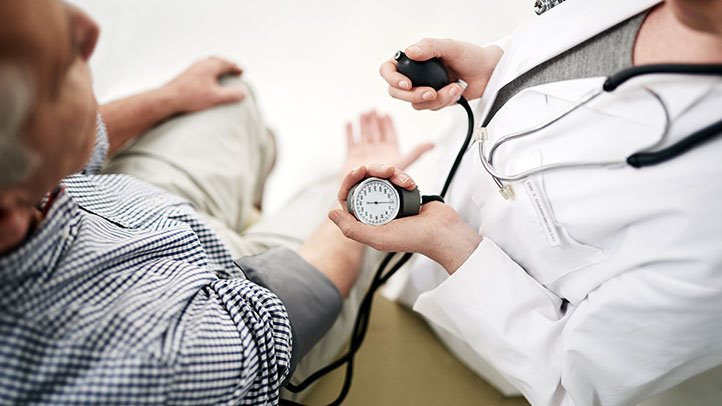Having High Blood Pressure Could Depend On Who Your Doctor Is
Has your doctor told you that you have high blood pressure? If so, you are not alone.
According to the CDC:
- Having high blood pressure puts you at risk for heart disease and stroke, which are leading causes of death in the United States.
- About 75 million American adults (32%) have high blood pressure—that’s 1 in every 3 adults.
- About 1 in 3 American adults has prehypertension—blood pressure numbers that are higher than normal—but not yet in the high blood pressure range.
- Only about half (54%) of people with high blood pressure have their condition under control.
- High blood pressure was a primary or contributing cause of death for more than 410,000 Americans in 2014—that’s more than 1,100 deaths each day.
- High blood pressure costs the nation $48.6 billion each year. This total includes the cost of health care services, medications to treat high blood pressure, and missed days of work.
Think about it. If you are in a room with just ten people chances are, 3 or 4 of them have high blood pressure. Did you know that high blood pressure is far more prevalent in some states than in others and apparently, it doesn’t have anything to do with politics?
Indiana, Kentucky, West Virginia, Tennessee, South Carolina, Mississippi, Alabama, Louisiana, Arkansas and Oklahoma have the highest incidents of high blood pressure. California, Oregon, Montana, Utah, Colorado, Minnesota, New York, Vermont, New Hampshire, Massachusetts and Connecticut have the lowest incidents of high blood pressure. If you’re interested in how your state fairs, you can see a map by clicking here.
Some of the reasons that so many Americans have high blood pressure is their diet and lack of activity. Poor diets, especially those loaded in fats and salts tend to raise blood pressure. Diets high in sugars and bad carbs put on extra weight, which means the heart has to work harder to pump blood throughout the body, leading to high blood pressure. A lack of exercise is also associated with excess weight and hence high blood pressure.
So, has your primary care doctor told you that you have high blood pressure? Maybe it’s your doctor and not you?
Check out this report:
“About 46 percent of adults have hypertension under the guidelines, which are more aggressive than those that came before. They set the threshold for stage one high blood pressure at 130/80, down from the previous benchmark of 140/90.”
“But primary-care doctor groups are critical of those standards, which they say could leave to over-diagnosis and over-medication – potential problems themselves when patients don’t need them.”
“The American College of Physicians and the American Academy of Family Physicians recommend medication for adults aged 60 or older with blood pressure above 150. People with a history of stroke or heart trouble should take medication to keep their blood pressure below 140.”
Many doctors continue to use the old guidelines while many younger doctors have converted to the newer guidelines. So, if your blood pressure is at 131, one doctor will tell you that you have high blood pressure while another doctor won’t.
However, if your blood pressure is in the 130s and your doctor does not tell you that you have high blood pressure, you should take it as a warning and make some changes in your lifestyle. Change your diet, reduce the amount of salt you take in and get more active. If necessary, lose some weight.
The guidelines may not be clear, but your blood pressure is. From everything I have read, a healthy blood pressure level is 120 and lower. That is a good standard to judge by and a standard everyone should strive for. As for your lower number, it should be lower than 80.









Recent Comments